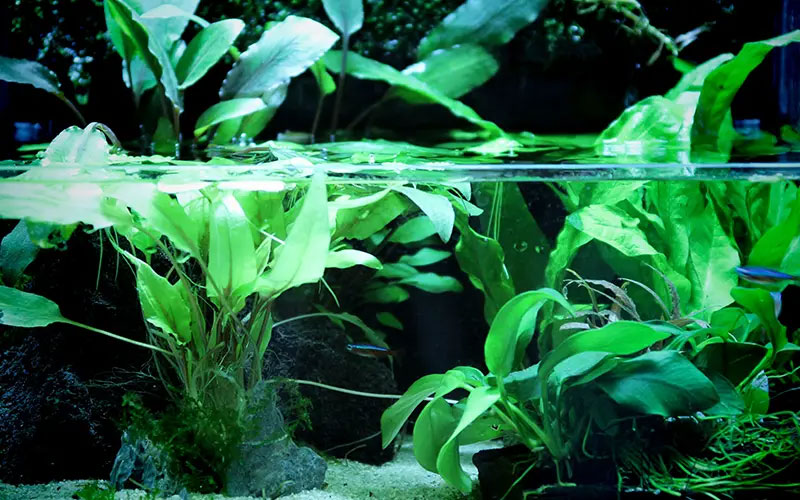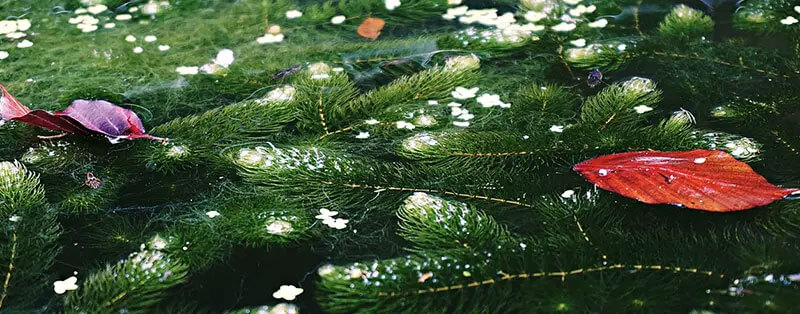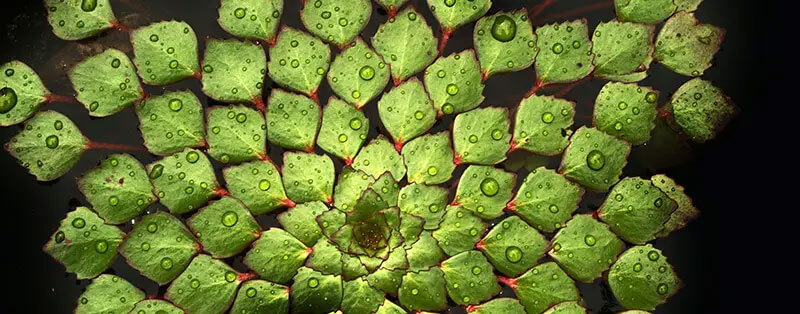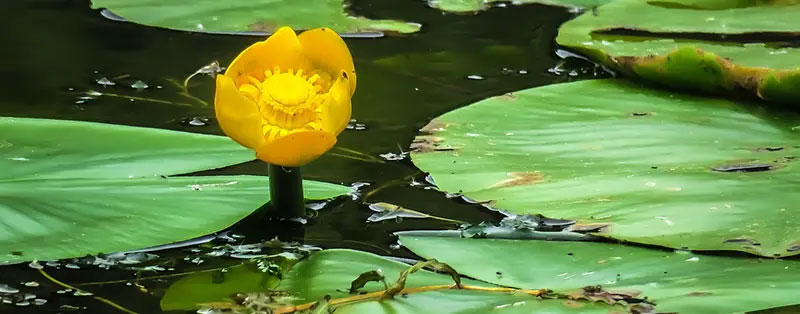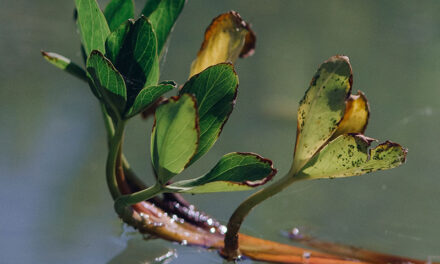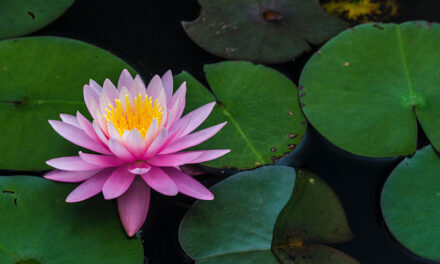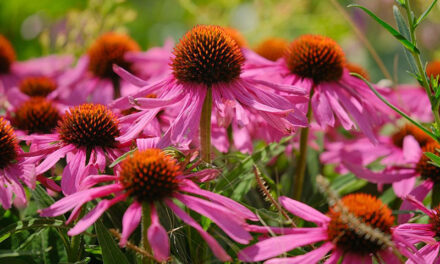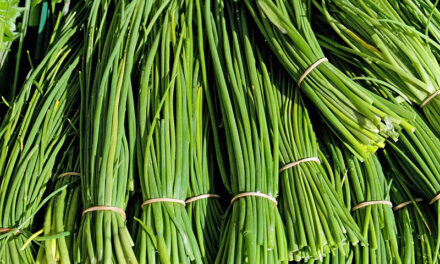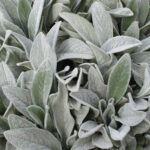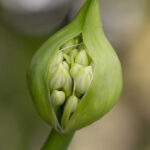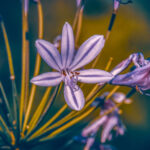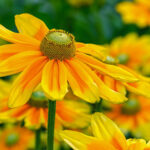If you want your pond to stay healthy and clear, you will have to work with pond pumps and filters OR with aquatic and marsh plants. Have you ever seen how a container of water turns into a container of green dirt within a few weeks? The same happens with a pond that only contains water. Aquatic plants and marsh plants are quite important for a biological balance.
A healthy pond starts with the right location. Before you set up your pond, you have to make a choice whether to filter and keep your pond’s water clean by means of a pump or you can choose to let the pond do its own job by planting aquatic plants and marsh plants.
Aquatic plants
Aquatic plants have a special function in the pond: keeping the water clear. They can be divided into 4 groups. Oxygen plants, floating plants, lilies and shore plants which are also called marsh plants.
Another distinction that is mentioned on Wikipedia is the plants that cannot live without water, the hydrophytes and helophytes.
Hydrophytes are aquatic plants that do not root in the soil, such as oxygenating plants, floating plants and lily-like plants.
Helophytes are swamp or riparian plants. These plants are highly resistant to flooding and can be submerged for periods of time, but also be able to survive long periods of drought. However, the plant should not be submerged too deeply, because it does need sufficient sunlight. The plant will also not be able to cope with prolonged drought. Helophytes are plants that root in the soil. Helophytes are used as a natural helophyte filter to purify pond water in, for example, a swimming pond.
Oxygen plants pond
The oxygen plants’ main purpose is to keep the water clear. They absorb nutrients and CO2 directly from the water. They convert this into oxygen in the plant and immediately release it into the water. Because the plant has no roots or woody structure, it takes little energy. Aquatic plants are the only ones that can do this in water. The process is similar to what happens with the air above water.
However, a regular plant needs more than just CO2, nutrients and moisture are also needed from the soil. A sufficient and good level of water hardness is necessary for the process of the aquatic plants to run smoothly. Rain lowers the level of water hardness. It is therefore recommended to regularly add minerals such as calcium and magnesium to your pond.
The planting of aquatic plants happens in baskets at the bottom of the pond. You can count on about 4 plants per 1000 liters of water to maintain a clear pond.
Types of Oxygen Plants
In the article the 10 best oxygenating plants you can read more about the plants mentioned below and their maintenance. Examples of oxygen plants are:
- Guichelheil, (Anagalis tenella)
- Shining pondweed, (Potamogeton lucens)
- Hornwort, (Ceratophyllum demersum)
- Waterweed, (Elodea Densa)
- Coniferous Herb, (Crassula Recurva
- Featherwort, (Myriophyllum spicatum)
- Bronmoss, (Fontinalis antipyretica)
Floating plants in ponds
Floating plants are not only beautiful to look at on the surface of your pond, they also have a purpose. The roots of floating plants extract nutrients from the water and provide oxygen, which they release into the air. The leaves provide shade for the lower plants in bright sun and thus also reduce the growth of algae. They also serve well as a shelter for fish or other aquatic animals. Floating plants need less hard water than oxygenating plants, so they can survive for longer periods of time in softer water and reduce growth of algae due to the absorption of these nutrients.
Examples of floating plants are:
- Water Pineapple, (Stratiotes aloides) a beautiful fast growing plant, which grows up to about 30 centimeters. Water Pineapple grows with lanceolate leaves above the water and blooms with white small flowers.
- Frogbit, (Hydrogaris morsus Ranea) looks a bit like a mini water lily, blooms with white/yellow flowers from June to August and has small round-shaped floating leaves.
- Water Chestnut, (Trapa Natans) floating plant with a habit of growing in a rosette shape with square leaves. In autumn the leaf turns yellow and red. It is an annual plant with a white flower. The seed emerges from the fruit, which is pinkish/purple and turns brown/black as it ripens. This fruit sinks to the bottom to grow into a new plant the following year.
- Red Water Fern, (Azolla filiculoides) owes its name to the fern, where the foliage is dominant. The plant has a highly branched stem with very small leaves. The leaf changes its color from blue-green to green, in autumn in the sun it turns reddish. Red Water Fern can only survive winter in sheltered places.
Lilies
There are the well-known water lilies (Nymphaea). But also yellow plum (Nuphar Lutea) and Cape Lily (Aponogeton distachyos) belong to this group. These species have large thick roots that are planted in a large basket and go into the pond with basket and all included. The basket contains special soil, from which the roots get their nutrients. With the exception of the yellow clump, these plants do not remove CO2 from the water and do not give off oxygen to the water. The leaves do this on the water in the air. There are various types of water lilies, read more about them in the article The 7 most beautiful water lilies.
Water lily
The Nymphaea, water-lily comes in many types and colours. Beautiful flowers, some fragrant, generally bloom from June till September. When purchasing the water lily, pay attention to whether your water lily is hardy. Water lilies are also available in different sizes, so there is a variety of water lilies for every pond size. They prefer a sunny spot. You can place the basket, in which you purchase the water lily, directly in the pond with it. This also contains special water-lily soil. So if you are going to plant yourself, make sure you have the right soil in the basket. Plant the basket deep enough to prevent freezing, as the plant will not survive frost.
Yellow water-lily
Nuphar Lutea in Latin, the yellow clump is a common native plant in the Netherlands. The plant has leaves that remain underwater, translucent, light green and wavy in shape. The leaves can be seen on the surface of the water, dark green. The leaf that remains underwater absorbs CO2 and gives off oxygen to the water. Above water, the leaf does the same, but with air. The plant blooms with yellow flowers, as the name implies. The flowers stick out 10 to 15 centimeters above the water surface. The flowering period is from May to August. Sometimes the plant can grow so fast that entire water surfaces are covered with the leaves of the yellow water-lily.
Cape Lily
Aponogeton distachyos is the Latin name for this aquatic plant. The flower is beautiful and reminiscent of an orchid. If you’re lucky, the plant will bloom again in the spring and again in the fall. During the summer period, the leaves often disappear and the Cape Lily’s water surface is invisible. The flower color is white and scented with vanilla. This plant prefers to be in the sun.
Marsh plants
Marsh plants are the largest group of pond plants. They are often used as edging for the pond. Another term used for marsh plants is therefore also bank plants. Pond plants can be planted in 0 up to 40 centimeters deep water.
Marsh or bank plants are also used as a helophyte filter for the pond. The water from the pond is then pumped through the swampy part. The roots of the plants provide oxygen in the soil and therefore attract bacteria. These bacteria ensure the removal of nutrients and waste from the water which then also is purified.
Types of swamp plants are
- Equisetum Japonicum
- Water-Arum
- New Guinea Shield
- Pikeweed
- Marsh Marigold
- Sweet Flag
- Water Mint
- Cattail
- Creeping Jenny
- Sedges
- Rushes
- Watercress
- Arrowhead
- Sparganium
- Veronica Beccabunga
- Alisma
- Flowering Rush
- Iris

